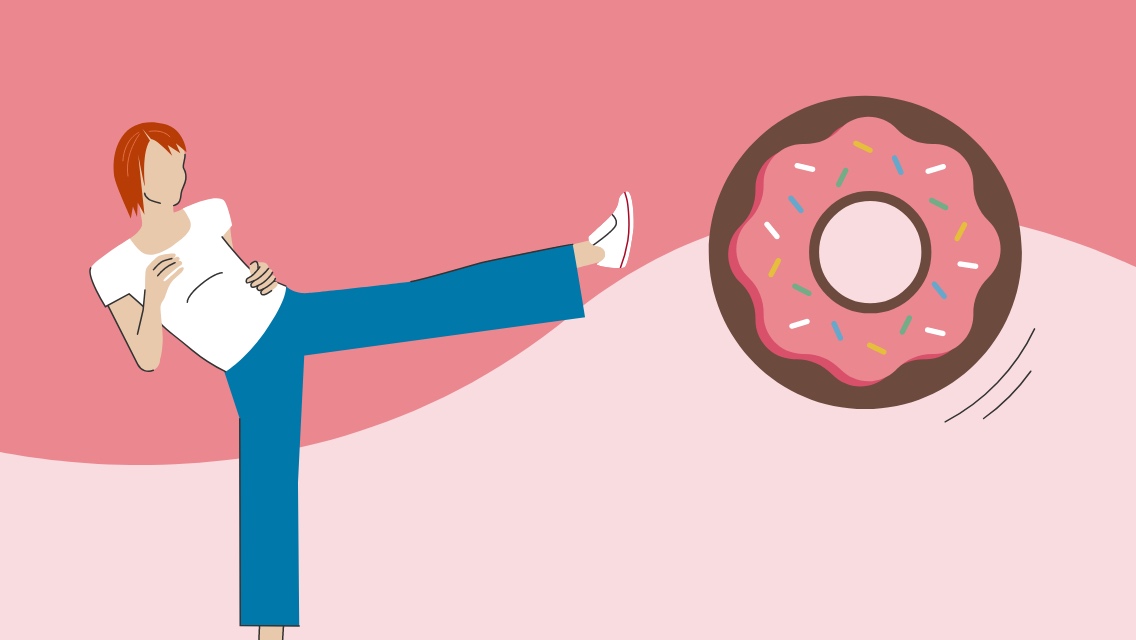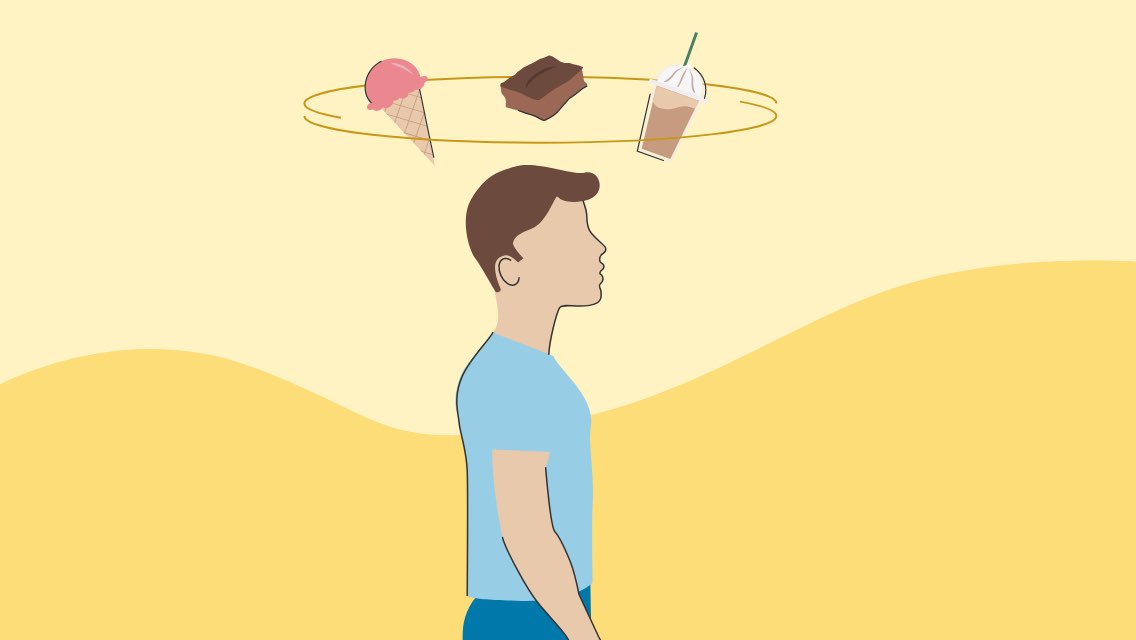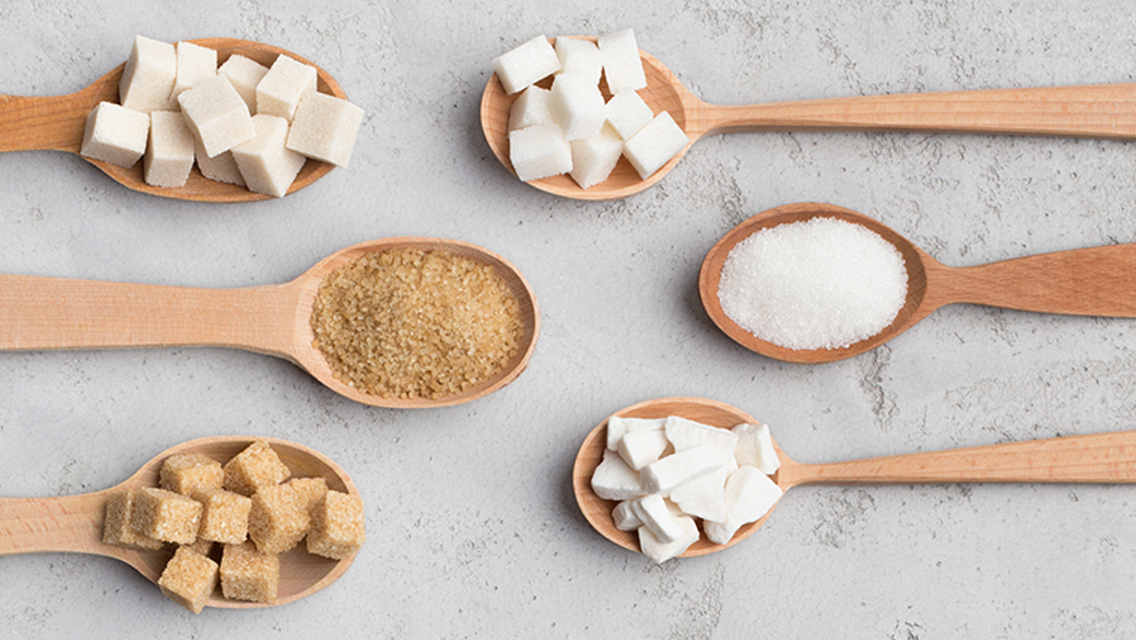Have you ever had a “snackccident?” That is, a snack you had seemingly by accident?
You somehow find yourself barefoot in your kitchen at midnight, eating ice cream straight from the container. A mid-afternoon energy slump has you landed in front of the vending machine pining for a package of candy. Or, perhaps you’re genuinely surprised that whole sleeve of cookies you started with the intention of having just one or two is really gone.
How is it that, despite our most valiant efforts, a sugar craving can so easily break our healthy way of life stride?
For some of us, a seemingly minor speed bump can turn into a snowball of uncontrollable cravings that may last for days — or even weeks. Too often, what we tell ourselves will be an occasional indulgence becomes, in fact, a daily habit.
However it manifests itself in your routine, a sweet tooth isn’t only detrimental to your waistline: it’s linked to your risk for diabetes, heart disease, and an array of other chronic health conditions.
While we all have varying levels of sugar tolerance, one thing we have in common is this undeniable principle: our consumption of sugar and sweets doesn’t move us toward optimal health. In fact, sugar actually sabotages our other lifestyle efforts.
Are you ready to lose — instead of indulge — your sweet tooth?
Get a handle on the basics.
First things first: Give yourself a reality check in the hydration, protein intake, and movement departments.
Are you hydrated — really? Ideally, you want to drink half of your body weight in ounces of water daily, and many Americans fall short of that. When our body sends a signal that it’s thirsty, we can often mistake it for hunger, leading to reaching for the nearest cupcake. Naturally, if we’re using sugar in an inadvertent attempt to resolve physiological thirst, our “cravings” will not be satiated.
Secondly, optimize your protein intake to help stabilize blood sugar spikes and crashes, which cause an energy level roller coaster and endless cycle of cravings for sugar and carbs. Many of my clients are shocked to learn their true protein needs and are pleasantly surprised when they’re liberated from the perceived need to eat every two to three hours.
Lastly, don’t forget about movement and exercise. Sure, a walk will distract you from the vending machine fare. More importantly, however, you’ll enjoy the non-sugar-induced serotonin boost. Add some sun exposure — especially during the midday slump — and you’ll feel naturally invigorated.
Ditch “healthy” labels.
Every nutrition choice either moves you toward health or away from it. Choose wisely.
From my experience as a dietitian, most foods plastered with flashy labeling and an elephant-sized font proclaiming their “health” qualifications are anything but nutritious.
Processed foods that are unrecognizable to nature (and ironically usually labeled “natural”) are typically high in carbohydrates and grossly lacking in hunger-busting protein and healthy fat. The processed carbs certainly will give you a temporary elation, but what goes up must come down.
You’ll be left where you started: undernourished, cranky, and channeling too much mental energy towards abstaining from the leftover donuts in the break room.
Instead, opt for satiating whole foods, such as a handful of cashews, a couple of hard-boiled eggs, or plain Greek yogurt topped with a few berries.
Bottom line: Man-made “food” products rarely provide optimal nourishment. Stick with unprocessed, natural-to-the-earth foods whenever possible.
Arm yourself with adequate sleep.
Are those late-night, sleepless entertainment hours really worth out of control cravings the next day?
Research shows when healthy adults are sleep deprived, they tend to crave carbohydrates and display changes in blood-sugar patterns that are reflective of insulin resistance.
Inadequate sleep can disrupt normal blood-sugar regulation. This means your body is even more apt to add any sugary intake directly to your midsection. The number one reason I hear for not catching the appropriate seven to eight hours of sleep is screen time, whether from a phone or TV. Aim to power down all devices at least an hour before bed.
Retrain your taste buds.
A whole saga could be written about the added sugars that seem to saturate the American food supply. In one of my former client group sessions, the participants found added sugars in everything from gravy mix to canned mushroom soup. These sneaky sources don’t taste overtly sweet to the average American, yet sugar is still a staple ingredient.
Our sweet-tasting sensors require much more sugar now than they ever have before to actually register the sweet sensation. The solution, however, isn’t simply transitioning to chemically-fortified “sugar-free” alternatives to enjoy at liberty. And while a naturally-sweetened option (with stevia, monk fruit, or erythritol) is an acceptable alternative in most nutrition plans, any dessert food with a rich sweetness isn’t advised to take up a substantial portion of your diet.
While it may sound extreme, going temporarily cold turkey on sugar can go a long way in turning down taste buds to their natural subtlety.
You might even find yourself fully satisfied with the silky sweetness of roasted beets, or the vivid taste of fresh summer raspberries. Believe it or not, the taste of a diet soda may actually become sickening over time. That’s a very good problem to have.
Supplement strategically.
Ensure that you’re benefiting from core supplements for foundational health and blood-sugar control. The two best things you can do to help set yourself up from a supplement standpoint are boosting protein intake with a quality protein powder with vitamins and minerals, while optimizing hydration by adding no-added sugar, naturally sweetened electrolyte support to your daily water intake. .
From my experience with clients, magnesium and collagen peptides can both be helpful as well. Anecdotally, most people who start supplementing with evening magnesium report an improvement in cravings (presumably from magnesium’s role in supporting healthy blood-sugar control).
Additionally, some naturally flavored and sweetened (with monk fruit or stevia) collagen peptides are known to blend easily into coffee, oatmeal, and yogurt to provide an easy and delicious replacement to common added-sugar food culprits.
Consult with a nutrition coach or dietitian to consider adding others, such as the 5-HTP and botanical blend in Relax to help promote sleep, when appropriate.
There’s no reason to have to exert chronic willpower over a sweet tooth to reach your long-term health and fitness goals. While taking ownership of your decisions is a critical part of getting there, treating the root cause of your cravings will allow you to finally surrender them.





